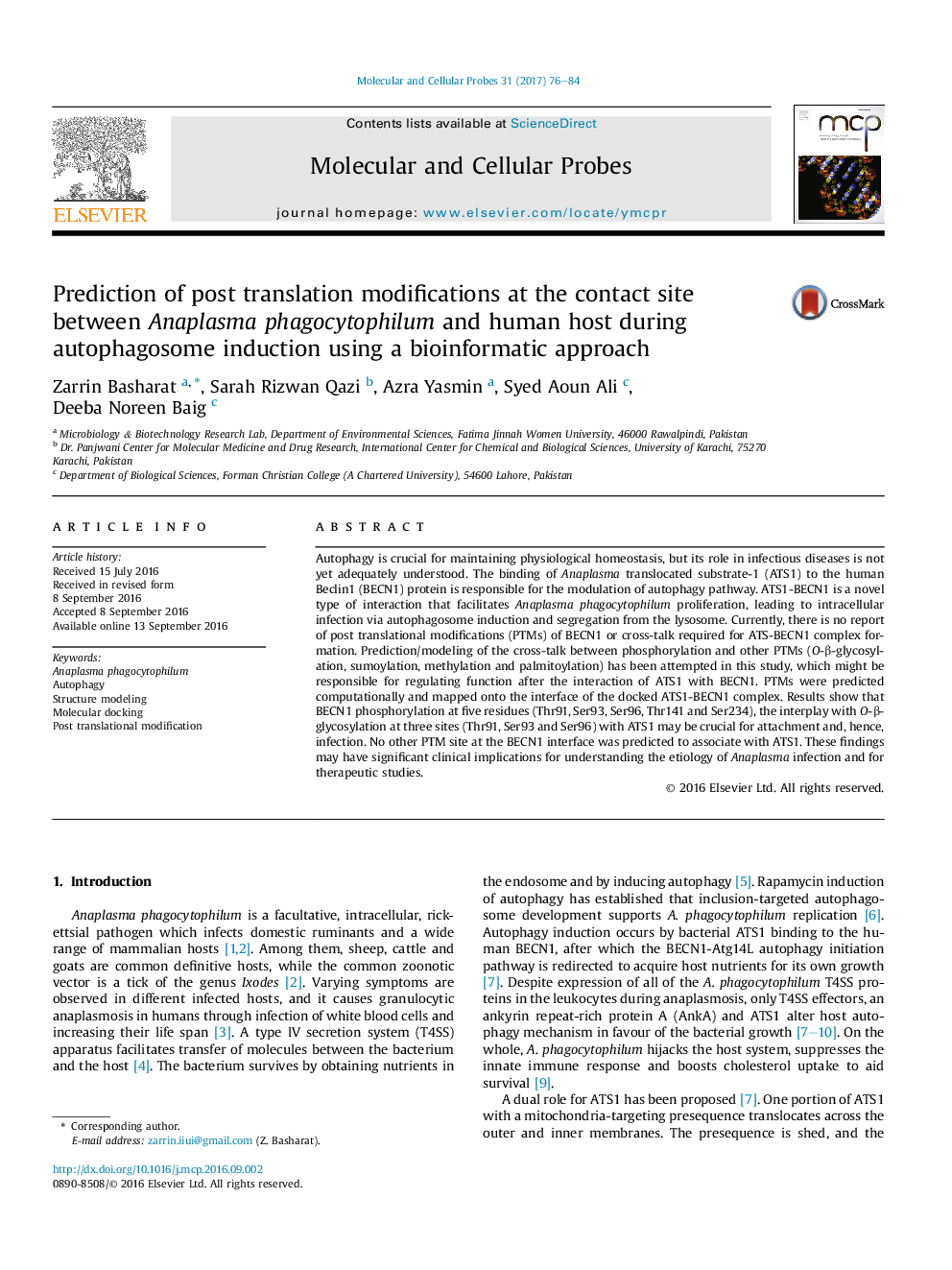| Article ID | Journal | Published Year | Pages | File Type |
|---|---|---|---|---|
| 5534554 | Molecular and Cellular Probes | 2017 | 9 Pages |
â¢BECN1 demonstrates potential of phosphorylation, glycosylation, methylation, palmitoylation, ubiquitination and sumoylation.â¢BECN1 interaction with ATS1 protein of Anaplasma phagocytophilum involves hydrogen bonding and hydrophobic interactions.â¢Phosphorylation and O-β-glycosylation exist at the interface of BECN11-ATS1 interaction.
Autophagy is crucial for maintaining physiological homeostasis, but its role in infectious diseases is not yet adequately understood. The binding of Anaplasma translocated substrate-1 (ATS1) to the human Beclin1 (BECN1) protein is responsible for the modulation of autophagy pathway. ATS1-BECN1 is a novel type of interaction that facilitates Anaplasma phagocytophilum proliferation, leading to intracellular infection via autophagosome induction and segregation from the lysosome. Currently, there is no report of post translational modifications (PTMs) of BECN1 or cross-talk required for ATS-BECN1 complex formation. Prediction/modeling of the cross-talk between phosphorylation and other PTMs (O-β-glycosylation, sumoylation, methylation and palmitoylation) has been attempted in this study, which might be responsible for regulating function after the interaction of ATS1 with BECN1. PTMs were predicted computationally and mapped onto the interface of the docked ATS1-BECN1 complex. Results show that BECN1 phosphorylation at five residues (Thr91, Ser93, Ser96, Thr141 and Ser234), the interplay with O-β-glycosylation at three sites (Thr91, Ser93 and Ser96) with ATS1 may be crucial for attachment and, hence, infection. No other PTM site at the BECN1 interface was predicted to associate with ATS1. These findings may have significant clinical implications for understanding the etiology of Anaplasma infection and for therapeutic studies.
